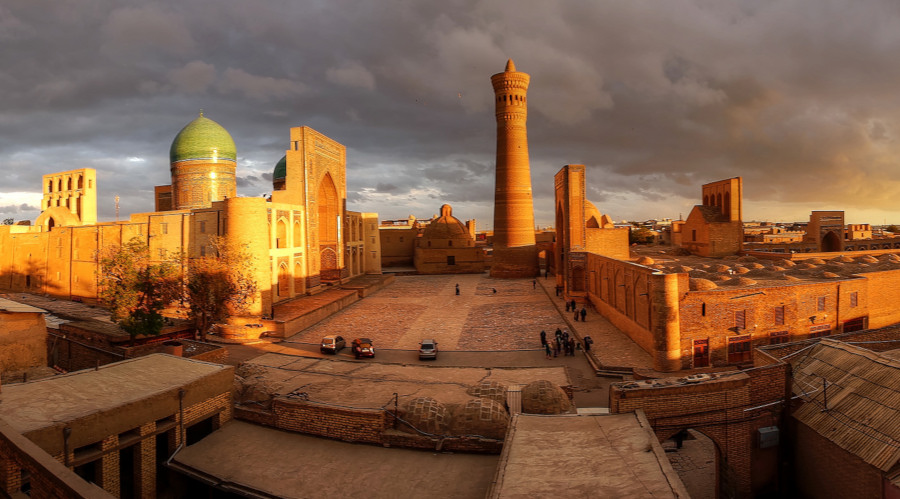
Source: CC BY-SA 2.0 by Fulvio Spada
Khiva was one of the key cities of ancient Khwarazm, at one point its capital. For centuries, Khiva was one of many medium-sized fortified trading centers within Khwarazm's vast network of irrigated farming communities on the edge of the Khorezm oasis. Khiva and other cities like it were incubators for agricultural and hydraulic innovation, engineering in city walls and sewage systems, and in the construction of small craft for navigating Central Asia's vital river system. In the 10th century, Khiva became part of the Samanid Empire and began to flourish as a regional center, specializing in glassmaking and ceramics. Al-Biruni was born in Khiva in 973, as were several other notable Central Asian scholars. Mongol invasion followed by an earthquake in 1299 devastated the city, but the similar destruction of nearby Urgench and a sudden change in course by the Amu Darya River elevated Khiva's fortunes, and by the end of the medieval period century Khiva had grown to become the region's capital. Today Khiva is a modest city of 50,000 people.
